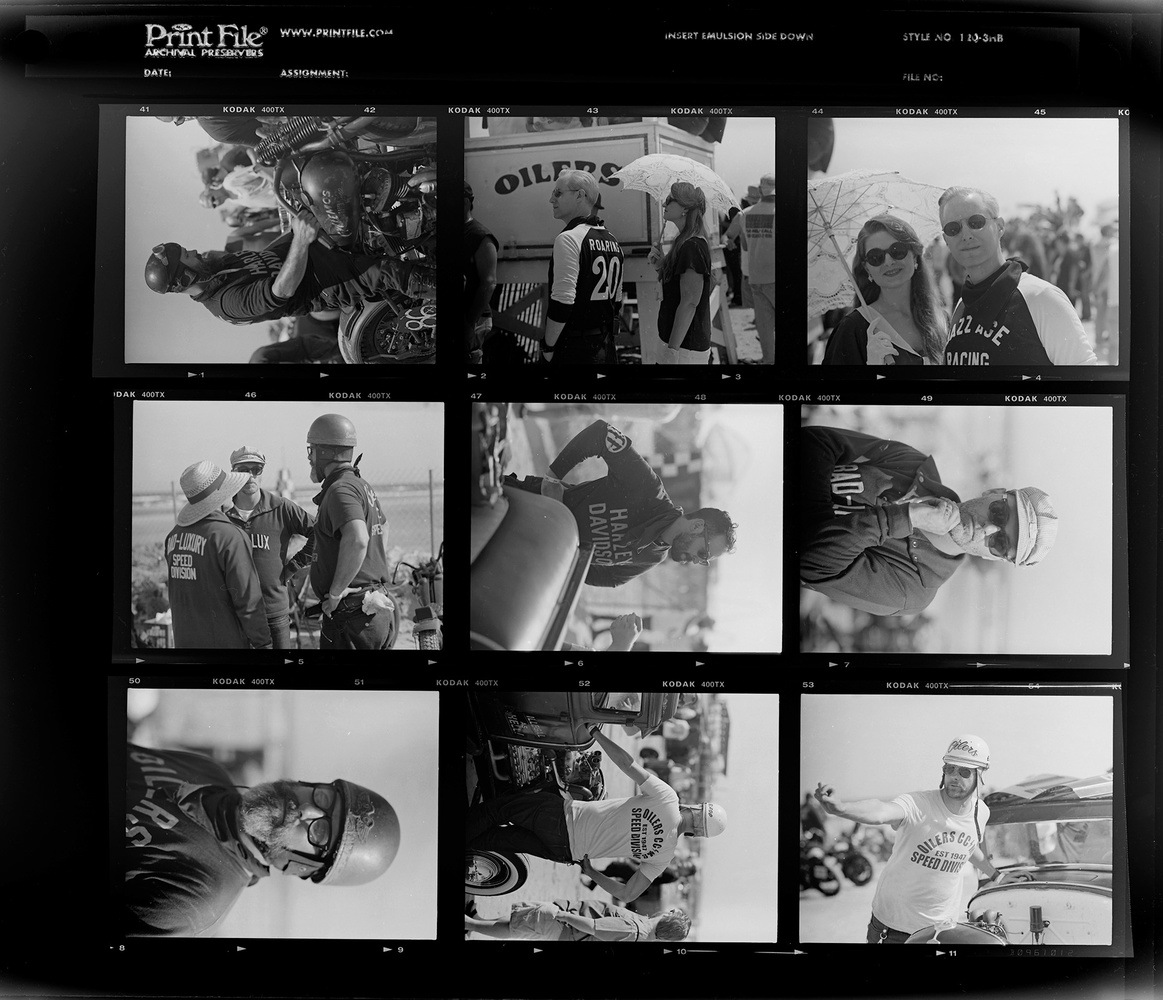Back in the good old days of film photography, contact sheets or proof sheets were one of the best ways to view results from black and white or color negative film shoots. Printed on photographic paper, these sheets were exposed in a darkroom by laying a roll of negative film typically cut up and placed in transparent sleeves. They are a great way to see an entire roll of film in one glance. Web galleries and slide shows have all but replaced them in this digital age, but for those few who are still shooting the odd roll of film and don't have access to a darkroom, here's a film and digital solution for making contact sheets at home using a light table and a digital camera.

I recently dusted off my old Pentax 6x7 camera and ran some rolls of Kodak Tri-X through it at a vintage hot rod event called The Race of Gentlemen in Wildwood, NJ. It seemed like the right time to use some of the older techniques, but my darkroom has been packed away in storage for more than 10 years now. I was able to dig out my tanks and reels to develop the rolls of 120 film. I wanted to see the results as soon as they were dry. Once the rolls had been cut and put into Print File sleeves, I pulled out a PortaTrace Light Table and photographed each roll flattened under a sheet of glass.

The images were captured in raw files and converted to black and white in Capture One. Then each file was brought into Photoshop and the negative images were inverted to positive and handled like any digital file. Most of these rolls required a boost in contrast to display the results that can be achieved with individual printing or scanning later.
Contact sheets were an effective method of seeing an entire roll and selecting the desired negative for printing. Most commonly, contact sheets were exact representations of the negative since they were pressed against the photographic paper. Some professional printing labs would make enlarged proof sheets by taking the entire roll of film into an 8x10 enlarger and projecting the group of images onto larger sheets of paper like 11x14" or 16x20" for an additional cost. This film/digital hybrid gives the utility of an enlarged proof sheet without the additional cost or any wet process.

With a large initial capture, individual images can be enlarged and cropped to show more detail and information about the shot. This is not intended to replace higher quality scanning or optical printing in the darkroom, but they might be acceptable to share on social media or send in email before the scans or prints are done. I plan on using the digital contact sheets to select the images I want to work with when I go into a darkroom to make traditional prints.







what lens do you recommend for something like this? a 50mm?
Late reply, but I used a 105mm Macro and had good results. Make sure you're using a nice piece of glass over the negatives and not plexi.